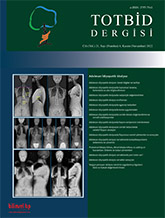
Although various classification systems and algorithms have been proposed to assist surgeons in determining fusion levels in surgical planning in the treatment of adolescent idiopathic scoliosis (AIS), there are no strict rules for fusion level selection in AIS patients. Changes in the fusion level are observed in parallel with the changing surgical techniques over time. While selecting the appropriate superior and inferior instrumented vertebrae constituting the boundaries of the fusion, the aim in selective fusion planning is to preserve the motion segments; prevention of proximal and/or distal junction kyphosis, shoulder imbalance and neck pain. Our aim in this article is to present the factors that should be considered in order to obtain a balanced and compensated spine in AIS surgery in the light of current literature.